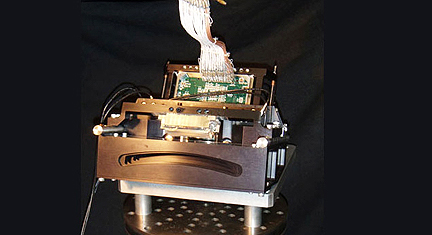JPL... Picture This
[SatNews] A team of researchers and collaborators from NASA's Jet Propulsion Laboratory, Pasadena, Calif., and the University of Arizona's College of Optical Sciences in Tucson has successfully conducted the first test flight of a prototype science instrument for a nexgen satellite mission to survey the impacts of aerosols and clouds on global climate change.
 A laboratory test version of the airborne prototype for the Multiangle SpectroPolarimetric Imager camera. Image credit: NASA/JPL-Caltech
A laboratory test version of the airborne prototype for the Multiangle SpectroPolarimetric Imager camera. Image credit: NASA/JPL-Caltech
The
Multiangle SpectroPolarimetric Imager, or
MSPI, is a multi-directional multi-wavelength, high-accuracy polarization camera that is a follow-on instrument to the
JPL-developed
Multi-angle Imaging SpectroRadiometer (
MISR) aboard
NASA's
Terra spacecraft. It is a candidate instrument for NASA's
Aerosol-Cloud-Ecosystem (
ACE) mission, an Earth satellite recommended by the
National Research Council in its
2007 Earth Sciences Decadal Survey. ACE mission objectives include characterizing the role of aerosols in changing Earth's energy balance (the balance between incoming solar energy and outgoing heat from Earth), especially their impact on precipitation and cloud formation. An airborne prototype version of the instrument, the
AirMSPI, was checked out Oct. 7 on one of NASA's high-altitude
ER-2 Earth Resources aircraft during a two-hour flight from NASA's
Dryden Aircraft Operations Facility in Palmdale, Calif.
Topical Tags :
Regional Tags :

